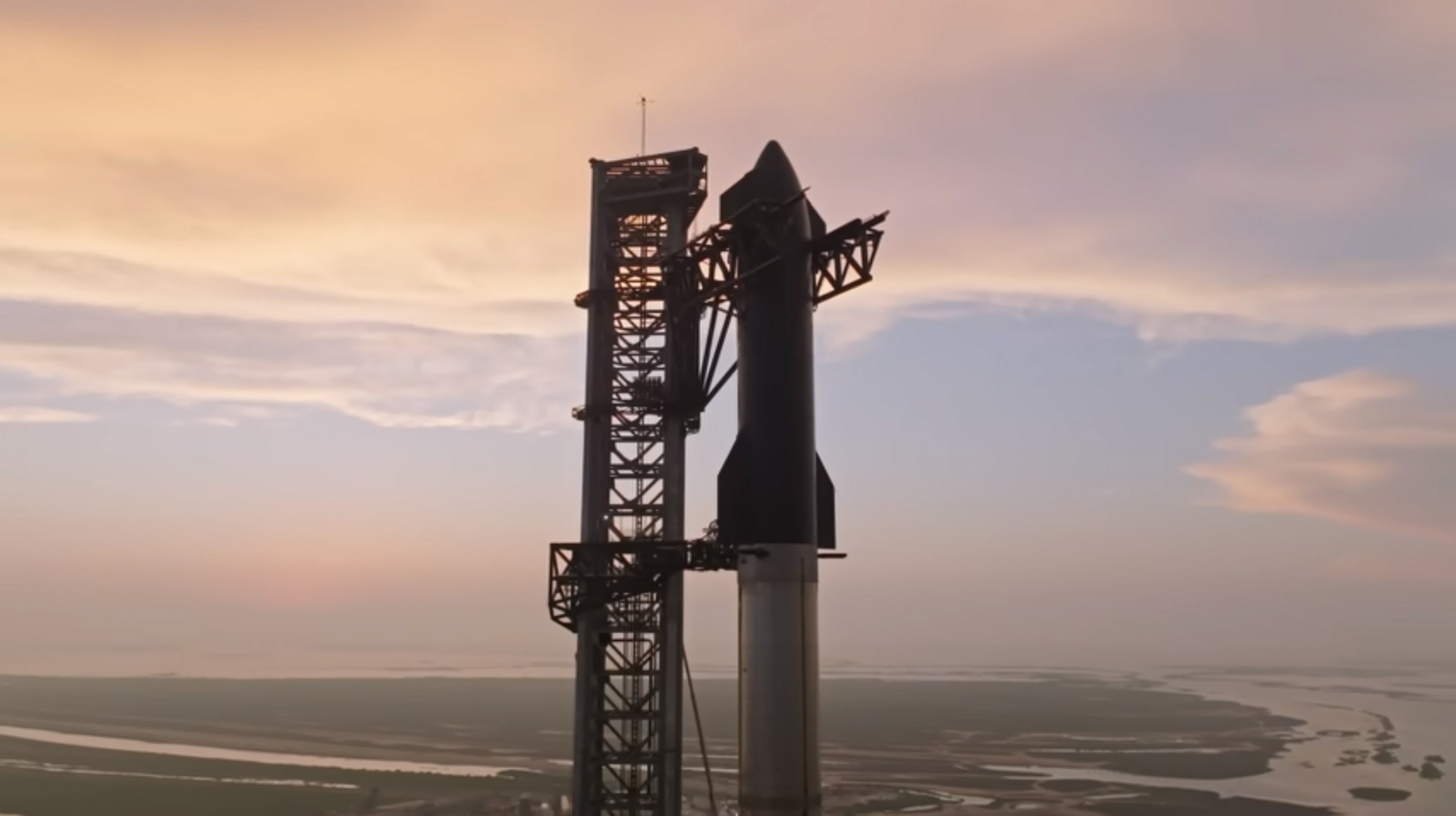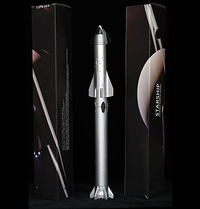
Update for Nov. 16: The second Starship launch was postponed to no earlier than Saturday, Nov. 18 to replace a grid fin actuator on the launch stack, according to an update by Elon Musk posted on X, formerly Twitter.
Starship has been cleared for its second-ever liftoff.
The U.S. Federal Aviation Administration (FAA) announced today (Nov. 15) that it has granted a license for the second launch of Starship, SpaceX's next-generation space transportation system.
"The FAA has given license authorization for the second launch of the SpaceX Starship Super Heavy vehicle," agency officials wrote in an emailed statement this afternoon. "The FAA determined SpaceX met all safety, environmental, policy and financial responsibility requirements."
The liftoff is set to occur Friday (Nov. 17) from Starbase, a SpaceX facility in South Texas, during a two-hour window that opens at 8 a.m. EST (1300 GMT; 7 a.m. local time in Texas). You can watch it here at Space.com, courtesy of SpaceX.
Related: Watching SpaceX launch Starship, the world's largest rocket, was simply unreal (video)
Starship Die Cast Rocket Model Now $69.99 on Amazon.
If you can't see SpaceX's Starship in person, you can score a model of your own. Standing at 13.77 inches (35 cm), this is a 1:375 ratio of SpaceX's Starship as a desktop model. The materials here are alloy steel and it weighs just 225g.
Note: Stock is low so you'll have to act quickly to get this.
Starship consists of a first-stage booster called Super Heavy and an upper-stage spacecraft known (a bit confusingly) as Starship. Both of these elements are designed to be fully and rapidly reusable. SpaceX thinks the vehicle will make the settlement of Mars — a long-held dream of company founder and CEO Elon Musk — economically feasible in the not-too-distant future.
Get the Space.com Newsletter
Breaking space news, the latest updates on rocket launches, skywatching events and more!
When fully stacked, Starship stands nearly 400 feet (122 meters) tall. It's the biggest and most powerful rocket ever built.
Starship has one bona fide flight under its belt, a test mission that launched from Starbase on April 20. SpaceX aimed to send the upper stage partway around Earth, targeting a splashdown in the Pacific Ocean near Hawaii. But Starship suffered several problems shortly after liftoff, including the failure of its two stages to separate, and the vehicle was intentionally destroyed high over the Gulf of Mexico.
The liftoff also damaged parts of Starbase, blasting out a crater beneath the facility's orbital launch mount and raining down chunks of concrete and other debris on the surrounding area.
To prevent such damage from happening again, SpaceX installed a water-deluge system beneath the orbital launch mount — a reinforced steel plate whose voluminous spray is designed to combat the intense heat and power of Super Heavy's 33 Raptor engines.
Related: Incredible photos of SpaceX's 1st Starship launch
The FAA wrapped up its investigation of the April 20 launch mishap in early September. Then, on Oct. 31, the agency announced it had finished a safety review ahead of the second Starship flight, assessing any risks the launch might pose to public health and property.
But there was still another regulatory box to check before Starship could get off the ground again.
"The FAA is continuing to work on the environmental review," the agency wrote in an emailed statement on Oct. 31. "As part of its environmental review, the FAA is consulting with the U.S. Fish and Wildlife Service (USFWS) on an updated Biological Assessment under the Endangered Species Act. The FAA and the USFWS must complete this consultation before the environmental review portion of the license evaluation is completed."
The environmental review apparently centered on what possible impacts the new water-deluge system might have on the area surrounding Starbase, which is a biodiversity hotspot. USFWS scientists did their research and found nothing to be terribly concerned about, so Starship can fly again.
The aims of the upcoming test flight will be similar to those of the April mission. If all goes according to plan, Super Heavy will come down in the Gulf of Mexico not long after launch, and the Starship upper stage will almost reach orbital velocity before splashing down near Hawaii.
The newly granted license is for one launch, FAA officials said.
Join our Space Forums to keep talking space on the latest missions, night sky and more! And if you have a news tip, correction or comment, let us know at: community@space.com.

Michael Wall is a Senior Space Writer with Space.com and joined the team in 2010. He primarily covers exoplanets, spaceflight and military space, but has been known to dabble in the space art beat. His book about the search for alien life, "Out There," was published on Nov. 13, 2018. Before becoming a science writer, Michael worked as a herpetologist and wildlife biologist. He has a Ph.D. in evolutionary biology from the University of Sydney, Australia, a bachelor's degree from the University of Arizona, and a graduate certificate in science writing from the University of California, Santa Cruz. To find out what his latest project is, you can follow Michael on Twitter.










